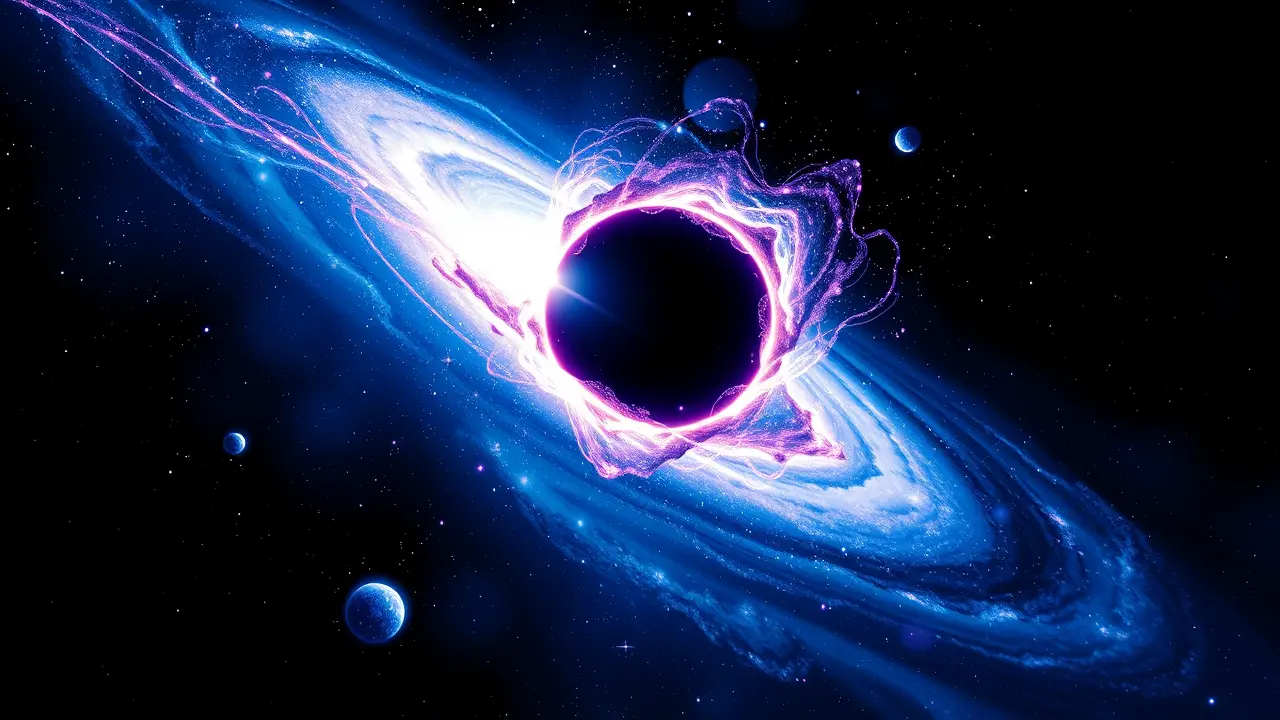
Sciencespace & astronomyBlack Holes and Galaxies
Black hole blast outshines 10 trillion Suns
TH
Thomas Green
15 hours ago7 min read2 comments
In a staggering cosmic spectacle that pushes the boundaries of known physics, a supermassive black hole residing a staggering 10 billion light-years from Earth has been observed annihilating one of the universe's most colossal stars, unleashing a flash of energy so brilliant it momentarily outshone the combined light of ten trillion suns. This cataclysmic event, captured by the relentless electronic eyes of the Zwicky Transient Facility (ZTF) at Caltech's Palomar Observatory, is almost certainly a tidal disruption event (TDE) of unprecedented scale, a celestial drama where a star wanders too close to a gravitational behemoth and is violently shredded into a spiraling stream of incandescent gas.Imagine the sheer, unimaginable force at play—a star, potentially hundreds of times the mass of our own Sun, being stretched and compressed by tidal forces so extreme that it's literally torn apart, its constituent material forming a superheated accretion disk that spirals into the black hole's event horizon at nearly the speed of light. This process, akin to water swirling down a cosmic drain, releases a phenomenal burst of radiation across the electromagnetic spectrum, a final, brilliant scream of light and energy before the stellar matter vanishes forever into the void.For astronomers, this is the equivalent of discovering a new class of cosmic explosion, a beacon from the early universe that challenges our understanding of black hole feeding habits and stellar demographics. The sheer distance of this event means we are looking back in time to an era when the universe was far younger, providing a unique laboratory to study how these monstrous black holes grew to such immense sizes.It raises profound questions: Was the devoured star a rare, primordial giant from the early cosmos? Or does this event suggest that TDEs involving supermassive stars are more common than our models predicted? This observation, likely to be studied for years by telescopes like the James Webb Space Telescope, doesn't just add a new data point; it fundamentally recalibrates the upper limits of cosmic violence and illuminates the dynamic, often violent processes that govern the life cycles of galaxies. It's a humbling reminder that for all our technological advancement, the universe still holds phenomena of such raw, destructive power that they can, from across billions of light-years, momentarily outshine every star in our own Milky Way galaxy combined, a testament to the awesome power of gravity's dark masters.
#featured
#black hole
#tidal disruption event
#star
#flare
#ZTF
#astronomy
#Caltech
Stay Informed. Act Smarter.
Get weekly highlights, major headlines, and expert insights — then put your knowledge to work in our live prediction markets.
Related News
© 2025 Outpoll Service LTD. All rights reserved.
